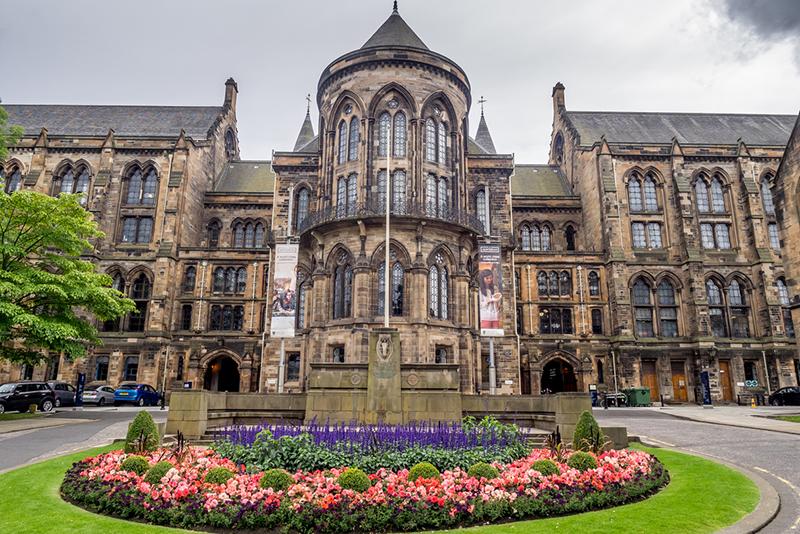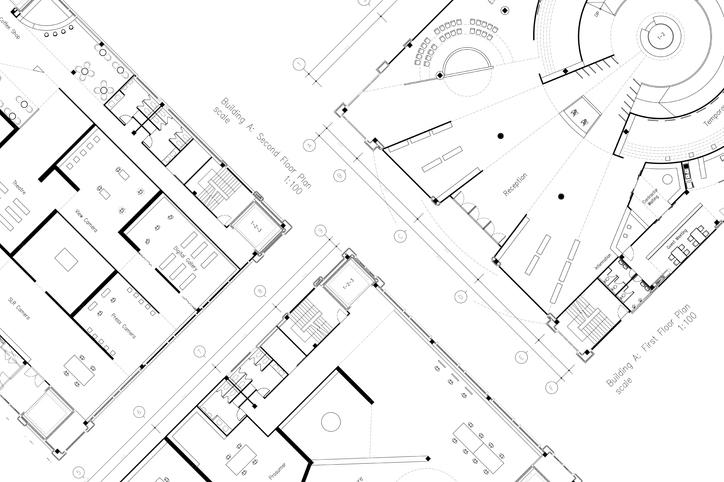Reshaping and expanding a campus can be a catalyst for fresh thinking, creating an opportunity to reimagine the future for teaching, learning, civic engagement and research, and how universities partner with all key stakeholders.
This was certainly the case with the University of Glasgow’s £1.8 billion redevelopment of the 14-acre Western Infirmary site. As one of the largest campus expansions in the UK, this programme reflects a commitment to creating an inclusive, futures-focused environment that connects academic ambition with the wider community through a strong civic mission.
Despite the challenges posed by the global pandemic, over the past three years the university has opened four state-of-the-art academic buildings – the James McCune Smith Learning Hub, the Mazumdar-Shaw Advanced Research Centre, the Clarice Pears Building and the Adam Smith Building – alongside newly developed public spaces and supporting infrastructure.
- Construction with the local community: how to manage estates projects in a built-up area
- How to use campus design to nurture a culture of belonging
- What should universities think about when redesigning their campuses?
These developments have become integral to both the university and Glasgow’s West End neighbourhood, redeveloping the latter into a welcoming area in the heart of the city. Here, key figures involved in the programme share their tips, insights and suggestions, noting the collaborative and inclusive approach that has brought this complex vision to life.
Tip 1: Build a people-centred vision for campus space
The university designed the campus development programme around the needs of the people who use it. As Nicola Cameron, director of property joint ventures, recalls: “We put people at the heart of our thinking, focusing on the activities that would deliver our ambition with a clear vision from the start.”
These weren’t empty words but rather the key to unlocking the entire development strategy. For example, the approach to the James McCune Smith Building challenged conventional design practices by engaging with the academic and student community to explore the vision for the building, the future of learning and teaching, and the desired “feel” of the space, which shaped all subsequent decisions.
Sir Anton Muscatelli, principal of the University of Glasgow, adds: “Our strategic vision has been for the university to be a world-leading and world-changing institution.” By prioritising people, the programme enabled cross-university collaboration and created spaces informed by the latest thinking and needs in research and learning.
Tip 2: Embrace co-creation to capture real voices
To put a people-centred vision into action, the leadership team committed to continuous, two-way dialogue with a range of stakeholders at every stage of the programme. Cameron explains: “We created an environment that encouraged co-creation – all stakeholders were at the table: estates, academics, IT, the community and the city council.”
These collaborations, informed by insights from workstreams, consultations and co-design workshops, brought multiple perspectives together, shaping all design, development and construction decisions. Karen Lee, director of strategy, performance and transformation, describes how this influenced the university’s choices: “We designed from the inside out – focusing first on what we want to happen inside the building and the experience for users.” This approach ensured that the campus was created with the needs of its users in mind, extending beyond architectural trends or aesthetics.
Tip 3: Challenge existing processes to achieve your vision
The development programme required the university to go beyond reshaping its physical campus into a complete rethinking of policies and operations from the ground up. Moira Fischbacher-Smith, vice-principal for learning and teaching, highlights the need to be bold when revisiting existing approaches: “We embraced extensive engagement with stakeholders and a willingness to rethink our approach at every level.” Procurement, for example, favoured long-term partnerships over transactional deals.
This holistic and integrated view not only brought together disparate teams, empowering them to deliver, but also improved our working practices across the wider university.
Tip 4: Invest in upskilling and continuous learning
Ongoing training, knowledge-sharing and continuous learning loops played a defining role in the programme’s success, particularly given the complexity of managing multiple projects at once. Frank Coton, senior vice-principal for strategy and resources, highlights three key factors: “First, the estates team provided comprehensive training for everyone involved in project governance, ensuring they were well prepared to manage complex projects. Second, we established a sponsors’ group, which allowed us to provide ongoing training to project leads, share knowledge between project leads and share experience of the different stages of project development.”
Last, understanding interdependencies across projects proved important. “The team developed systems to recognise project interconnections early, proactively identifying challenges and opportunities. This approach made the whole greater than the sum of its parts,” Coton says. Adaptability and continuous learning were at the core of ensuring that the team was fully prepared to deliver such a large-scale project.
Tip 5: Embrace your roots
As a civic university located in the heart of Glasgow’s West End, aligning the campus development with the city’s ambitions and ensuring that the transformation benefited the wider community was a driving force for the team. Muscatelli highlights this commitment: “We wanted to open our spaces, creating an active, accessible and welcoming campus for the city.”
Considering how we can enable community engagement and design spaces that invite community shaped our ideas. Fischbacher-Smith shares the team’s thinking: “We wanted to reframe the ‘ivory tower’ image of our historic campus, without losing our sense of history, place and academic distinctiveness.
“We set out to create a place that supported engagement and was woven into the city, blurring the boundaries, with inviting thresholds and accessible spaces to tell our stories, widen participation and inspire others,” adds Cameron.
The approach focused on creating an integrated community experience by considering building designs, pedestrian flows and the co-location of students, staff and activities. This process was intended to integrate the campus seamlessly into the city’s transformation, regeneration and reimagination. As Fischbacher-Smith concludes: “Ensuring that our campus development complements, integrates with and enhances the ambitions and investments of the city council, regional partners and local businesses was key.”
Sir Anton Muscatelli is the vice-chancellor and principal, Frank Coton is senior vice-principal for strategy and resources, Karen Lee is director of strategy, performance and transformation, Nicola Cameron is director of property joint ventures, and Moira Fischbacher-Smith is vice-principal for learning and teaching, all at the University of Glasgow.
The University of Glasgow estates team was shortlisted in the Outstanding Estates Team category in the 2024 THE Awards. A full list of nominees can be found here.
If you would like advice and insight from academics and university staff delivered direct to your inbox each week, sign up for the Campus newsletter.




comment